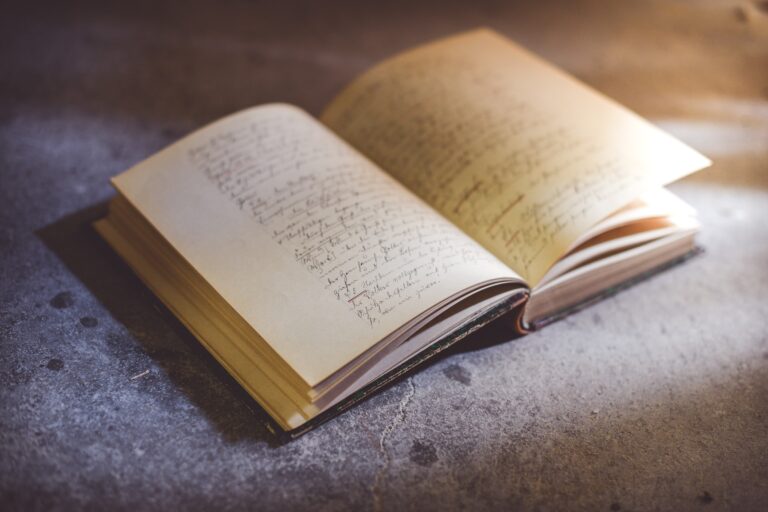Onomatopoeia in Poetry: Discover its Definition and Famous Example of Onomatopoeia Poem
Onomatopoeia is a unique and captivating expression found in literature, particularly poetry. It often brings words to life by creating an auditory sensation that appeals to readers’ imaginations. Like music can evoke emotion and imagery with its notes, onomatopoeia uses various vocalizations to convey meaning. In this article, we’ll explore what onomatopoeia is, examine some examples from poetic works, and uncover how it creates vivid images for readers.
Onomatopoeia exists in many languages across the world and has been used for centuries as a literary device in storytelling. Authors have employed onomatopoeic words from Homer’s Iliad to Shakespeare’s sonnets to create an atmosphere or feeling within their work. Using sound effects instead of visual descriptions, these writers give readers insight into characters’ emotions through speech rather than physical gestures or scenery. This makes onomatopoeia especially useful when writing about things such as animals or birdsong – both difficult concepts to accurately portray without resorting to abstractions.
At its core, onomatopoeia adds texture and depth to language by connecting written words with actual sounds. We’ve all heard someone say “buzz” or “sizzle,” so why not use those same noises within our creative endeavors? With a little bit of practice and exploration, you can make your prose come alive by utilizing the power of onomatopoeia!
Definition Of Onomatopoeia
Onomatopoeia is a figure of speech used to create the sound effects of words. It involves using words that imitate or suggest sounds. Examples are “buzz,” “hiss” and “bang.” Onomatopoeia can be found in all types of literature, especially poetry. Poetry helps to create vivid imagery for readers and bring life to descriptions within poems.
Onomatopoeia has been around since ancient times. Homer’s epic poem The Odyssey contains examples of onomatopoeia such as “the hissing sea” and “roaring winds” which help depict scenes more vividly than simply writing them out in plain language would have done. Other poets who have employed the use of onomatopoeic words include William Wordsworth, Alfred Tennyson, Walt Whitman and Emily Dickinson.
The definition of onomatopoeia varies depending on culture and language, but generally speaking, it refers to words that mimic or suggest the source of their production, either an object, animal or human being. For example, when a dog barks, we might say “woof woof” instead of just saying “dog barked” – this is one type of onomatopoeic word. In summary, onomatopoeia is a figure of speech used to recreate natural sounds within written works primarily for emphasis or dramatic effect.
Using Onomatopoeia In Poetry
Onomatopoeia is a powerful tool for poets, allowing them to create vivid images and evoke strong emotions in their readers. Using onomatopoeic words can draw the reader into the poem, creating an atmosphere of excitement or suspense with minimal description needed. In poetry, it’s best used sparingly yet effectively to ensure that the image created resonates with the audience. Here are some examples of how onomatopoeia can be used:
- The rush of wind through leaves – rustling
- A roaring fire crackling
- Heavy rain pouring down
- A hammer slamming against metal – clanging
- Birds singing in the morning – chirping
Using onomatopoeic words gives poems more dimension than if they were written without any sound effects. It brings life to each scene described, evoking feelings such as joy, fear and sorrow depending on what the poet chooses sounds. By weaving these sounds together with other elements like imagery, metaphor and personification, poets can create truly unique works of art that will stay with readers long after reading. Onomatopoeia adds depth and richness to any poem; its power should never be underestimated.
Difference Between Onomatopoeia And Phanopoeia
Onomatopoeia and phanopoeia are both types of sound devices used in poetry. Onomatopoeia uses words whose sounds suggest meanings, like ‘buzz’ or ‘hiss.’ Phanopoeia uses imagery to evoke auditory sensations, such as a poem about thunder that reads “booming.” Both techniques can be used to create vivid images and convey emotion.
When writing with onomatopoeia, it’s important to choose words carefully. A good example would be using “crack” instead of “snap” when describing something breaking. The two words have similar meanings but different connotations; “crack” implies greater intensity while “snap” brings up more subtle tones. Using precise language helps make onomatopoeic phrases more effective.
Phanopoeia relies less on specific words than on the overall atmosphere. Poets should focus on creating an immersive environment for readers by conveying sound through visual cues when crafting this type of writing. For instance, if a poet wanted to capture the feeling of someone walking through tall grass, they might write: “The slim leaves shifted beneath my feet, whispering secrets.” This description not only suggests the existence of noise but also creates a sense of mystery and wonderment associated with being outdoors.
By combining these two poetic devices, authors can craft powerful pieces that bring their worlds alive and draw audiences into them emotionally. Both tools can help writers concisely express complex ideas and feelings.
Some Examples Of Onomatopoeia Poems
The use of onomatopoeia in poetry and literature is an effective way to create vivid imagery. An onomatopoeic word imitates the sound associated with a thing or action, such as “buzz” for bees, or “meow” for cats. These words can be used to emphasize a certain feeling or atmosphere being described by the writer. Examples of these words include swish, caw, chirp, and rattle.
Onomatopoeia examples can often be found in poems that focus on nature and animals. For instance, Emily Dickinson’s poem “A Bird came down the Walk” includes several onomatopoeic words like “fluttered,” “softly,” and “cheeped.” Similarly, William Blake’s poem “The Tyger” features words like “roar,” “twist,” and “howl.” Such words help to evoke feelings of awe and mystery about the creatures being written about.
Other poets have used onomatopoeia to capture more abstract concepts beyond those related to nature and animals. In her poem “Dream Deferred” Langston Hughes uses words such as “fizzle” and “crumble” to describe how dreams may slowly fade away over time if they are not pursued. By incorporating this figurative language into his work, he creates powerful images that bring out the emotions behind his message.
No matter what subject a poet chooses, using onomatopoeia encourages readers to visualize scenes vividly by hearing sounds rather than just seeing visual representations of them. Words like boom, crackle, murmur, and buzz – when poetically arranged – add texture and life to a piece of writing without relying solely upon descriptions alone.
How To Use Onomatopoeic Words Effectively
Having explored some examples of onomatopoeia poems, it’s time to discuss how to use these words effectively. Onomatopoeic words are an excellent tool for building an atmosphere in poetry and literature. They give the reader or listener a sense of what is happening within the text without explaining it through dialogue or description. However, writers must know when and where to use them to do this.
The key is to use onomatopoeic words sparingly and strategically. For example, if a poem has a lot of action, then using more than two or three words might create too much chaos and confusion for readers.
However, they can add depth and texture to the piece if used at just the right moment – such as during moments of intense emotion.
Additionally, choosing specific sounds that evoke certain feelings (e.g., ‘buzzing’ may indicate excitement while ‘hissing’ could suggest danger) can help build up tension in a narrative or draw attention to certain aspects.
Using onomatopoetic words requires careful thought about their placement within the text and consideration for their meaning and impact on readers. With practice, writers will soon learn which works best for different settings and scenarios – all adding to the effective use of words that bring life into your writing!
Clarity And Rhythm With Onomatopoetic Sounds
Onomatopoeia is an incredible poetic device that brings a poem to life. When used appropriately, onomatopoeic words can create powerful imagery and evoke strong emotions in readers. The poet uses these words to help the readers imagine what they are reading. Onomatopoetic sounds often imitate the natural sound of animals or objects, allowing the reader to visualize them more vividly. Utilizing this poetic tool effectively creates a sound-like effect that evokes certain feelings within the audience.
The use of onomatopoeia helps poets describe scenes with greater clarity; for example, if a poet wants to describe a bird chirping in a tree outside their bedroom window, using onomatopoetic words such as “tweet” or “chirp” will make it easier for readers to understand what the poet is trying to portray. This also allows readers to connect with the poem’s message more efficiently by providing them with concrete examples rather than abstract concepts. Additionally, when used properly, this literary technique adds rhythm and flow to a poem; its repetition creates an interesting tempo that keeps readers engaged throughout its entirety.
By incorporating onomatopoeia into poems, writers have captured moments on paper in ways no other literary devices can achieve. It gives readers insight into how things sounded at any given time and provides vivid descriptions that allow us all to feel like we’re experiencing whatever scene has been described through poetry. Through carefully chosen word selection and placement, poets can bring stories alive and draw out various emotions from people who read their work—all because of one simple but effective poetic device: onomatopoeia.
Influence Of Onomatopoeia In Literature And Society
Onomatopoeia is a form of sound symbolism used in poetry and literature. It creates an association between the sounds made by words and the objects or actions they represent. This connection helps readers hear the sound of action as it’s happening, allowing them to experience the poem more viscerally. Through this heightened sensory awareness, onomatopoeia can create emotion and provide insight into what’s taking place within the text.
Examples of Onomatopoeia in Poetry are plentiful; from Robert Burns “tweedle-dee tweedle-dum” to T.S Eliot’s ‘hollow men tittering,’ poets have been utilizing onomatopoetic language for centuries to bring life to their verses. Poems become richer with texture and meaning by incorporating words that mimic real-world sounds like bells ringing or birds chirping. The reader’s senses are engaged as they delve deep into each line; whether they’re laughing at the absurdity of cluck-clucking chickens or cringing at a hauntingly realistic cackling witch, there is no denying that onomatopoetic words lend themselves perfectly to poetic expression.
The influence of onomatopoeia in literature extends beyond just poetry, though – its ability to create vivid imagery has seen it utilized across all genres of writing throughout history. From war stories capturing bullets whizzing through the air to memoirs describing rain gently pattering against windowpanes – writers use these unique combinations of letters to make scenes come alive in ways traditional descriptions cannot always achieve. As well as giving readers a better understanding of what is being written about, these examples demonstrate how effective sonic elements can be when incorporated into prose.
By combining definitions and examples of onomatopoeia with clarity and rhythm, authors have long been able to tap into emotions such as fear or joy through powerful descriptive language alone – making it one of literature’s most enduring tools for storytelling over time.
Conclusion
In conclusion, Onomatopoeia is an interesting and versatile literary device that can be used to add depth and complexity to any piece of writing. It has been a part of language since the dawn of human existence, with examples found in various genres such as poetry, literature, comics, and even non-verbal communication. With its range of cultural variations and its ability to invoke powerful emotions, it’s no wonder why this tool continues to captivate readers around the world.
It’s estimated that over 50% of all languages use some form of onomatopoeia. This statistic alone speaks volumes about how integral Onomatopoeia is to our collective understanding of storytelling and expression. By utilizing this unique literary technique we are able to bring words alive for readers by allowing them to experience sound without having heard it directly. In doing so, writers give their work added dimensionality and create stories that stay with us long after we’ve finished reading them.
Onomatopoeia truly is an invaluable tool; one that allows us to express ourselves in a way nothing else can match. From creating vivid imagery with just a few syllables or conveying complex ideas through simple sounds – when done right, Onomatopoeia can take your writing from good to great!




